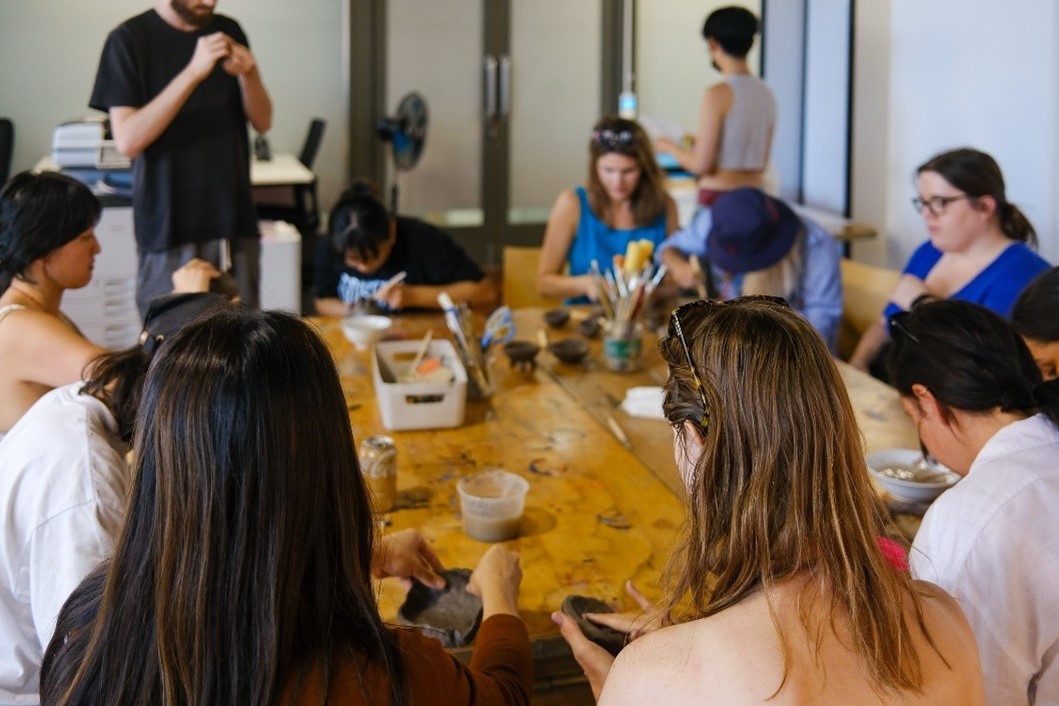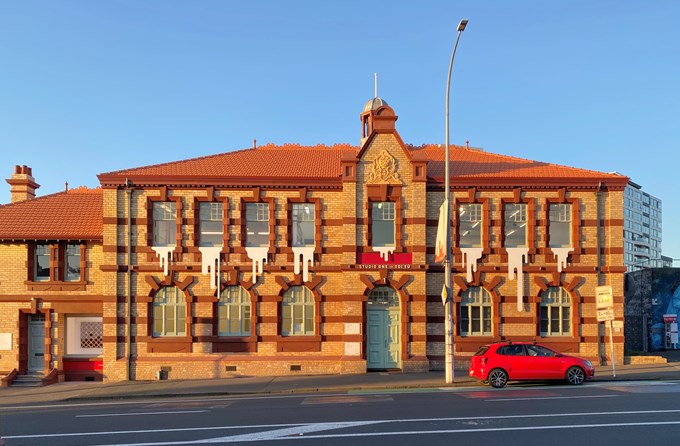After nearly a year of seismic refurbishment, Studio One Toi Tū is ready to open its doors again on 6 September.
Built in 1906, this heritage building has now been strengthened to 67 per cent of the new building standard (NBS), meaning it is no longer earthquake-prone under the current building legislation.
“We’re looking forward to welcoming our community back to the space at 1 Ponsonby Road,” says Siobhan Connelly, Studio One Toi Tū’s community place manager.
“This is a space that has a long history in Tāmaki Makaurau and the works were necessary to ensure we can preserve it for future generations.
“When the facility reopens, we’ll be able to resume our full programme of activities, events and courses. Even though we have managed to continue with courses at alternative venues, it’ll be great to have everything back under one roof.
“We know our community has been waiting patiently for the reopening and we’re delighted to be able to deliver a safer and improved facility for everyone to enjoy.”
In addition to the seismic works, other building improvements were also completed including re-roofing, fire safety enhancement, lighting installation, and repairs and maintenance works to preserve the historic building fabric.
Celebrating with a new event
Studio One Toi Tū reopens to the public on Wednesday 6 September. To mark this there will be a small opening event on site from 10am – more information can be found here.
Later in the month, to celebrate the reopening, Studio One Toi Tū will be hosting an indoor event, the Winter's End Pottery Market on Saturday 16 September, 10am – 3pm. The event will feature over 20 different stalls selling ceramics, ranging from functional ware to sculptural. There will also be have-a-go pottery workshops for hand-building and wheel throwing available throughout the day.
You can find out more about the event on the Studio One Toi Tū Facebook page. Make sure to book your spots early so you don’t miss out!
With more exciting news, the Studio One Toi Tū Term 4 Programme is out now. Packed with a fantastic lineup of creative classes, workshops, exhibitions, and events suitable for artists of all ages, this program offers a unique opportunity to dive into the world of creativity. Don't miss out on the chance to secure your spot in one of our captivating creative courses. Plus, our new program is out now, so be sure to explore all the amazing offerings!
Reflecting on the past year
Reflecting on the past year where Studio One Toi Tū was temporarily relocated to 238 Karangahape Road, Siobhan says it has been wonderful to work with new artists and become part of the local community.
“We had the opportunity to work with an amazing array of artists at the space which provided a huge amount of visibility on one of the busiest roads in Tāmaki Makaurau.
“One project particularly close to our hearts was an exhibition and series of public programming highlighting the work of three local ceramic artists. The show was curated by our very own team member Yeonjae Choi and it provided a platform for local early career Asian artists.
“The show explored how artists blur the boundaries between art and craft, and the idea of how the body exists in a space between past and present, belonging and alienation.

Artists and curator at the closing event, sharing Ruby’s fermented kai with the community. Left to right: Yeonjae Choi, curator, Ruby White, Cindy Huang, Sung Hwan Bobby Park.
“With this show, we were able to host a great line-up of public programmes engaging our local community in a variety of different ways. This included ceramics drop-in sessions open to all as a part of the First Thursday celebrations on Karangahape Road. Each of the artists delivered a workshop and even ran sessions for school groups from the local primary school Newton Central.
“It has been wonderful to get the wider community involved in our events and we hope those who did come along have seen themselves reflected in our programming.”

Drop-in ceramics session run by Yeonjae Choi as a part of First Thursdays on Karanagahape Road.
Seismic strengthening other heritage buildings
A number of other key buildings in Auckland of cultural and historic importance will be future-proofed against earthquakes for residents and future generations to enjoy with $19 million of funding confirmed through Auckland Council’s Capital Investment Work Programme. The funding for this financial year and FY24/25 was approved by councillors in the Planning, Environment and Parks Committee earlier this month.
The Leys Institute in Ponsonby will undergo seismic upgrading, restoration and modernisation with just over $10 million allocated to this project through to FY 25/26.
The site at 20 St Marys Road is a group of heritage buildings built in 1905 which are earthquake-prone and were closed in December 2019 due to safety risks. They need improvements to make them easier to use and safer in the event of an earthquake. They were the first major public buildings in Ponsonby and due to their historic significance, they are important taonga to preserve.
Nathan Homestead in Manurewa will undergo seismic strengthening with $6.3 million allocated to the project for investigation and design through to physical works, with an estimated completion date in mid-2025. Built in 1925, the homestead is a beautifully maintained heritage arts, culture and events with heritage gardens and bush areas.
“Leys Institute and Nathan Homestead are unique and beautiful taonga which residents in different parts of Auckland use. It’s vitally important seismic strengthening happens so residents, visitors and future generations of Aucklanders alike can utilise them safely for everyday activities,” says Councillor Richard Hills, Chair of the Planning, Environment and Parks Committee.
“We need to fund the seismic strengthening of notable buildings like these as it’s required by law and will give them the best chance of being preserved in the event of an earthquake.”
Why is seismic strengthening needed and how is it carried out?
- Seismic remediation is required by law to make buildings safe to occupy.
- There’s a national system for managing earthquake-prone buildings. Councils determine which buildings are earthquake- prone and work must be carried out to remediate them.
- Auckland Council always programmes seismic strengthening work for historic buildings as part of a renewal in which the buildings’ heritage components are respected.
- Auckland Council focuses on strengthening buildings with low seismic ratings with priority given to heritage buildings falling into very-high seismic risk category (<20%NBS).
- If there is a substantial alteration that needs a building consent planned to take place on an earthquake-prone building or part with the value exceeding $150,000 and 25% of the building’s improvement value, the building owner must do the required seismic strengthening work at the same time as the alterations.


